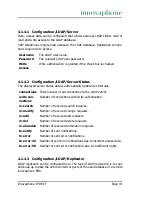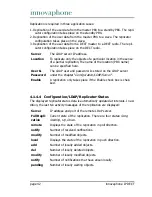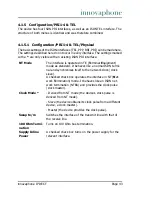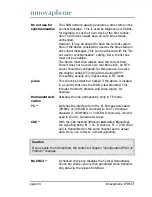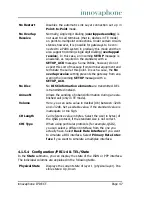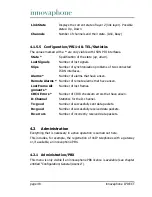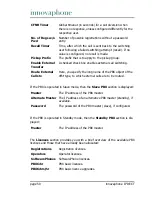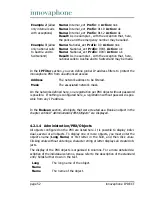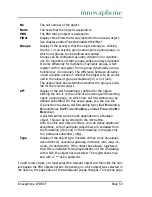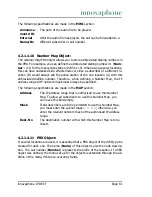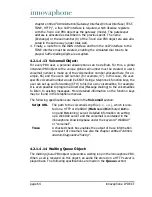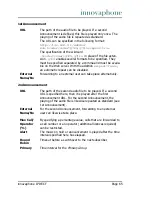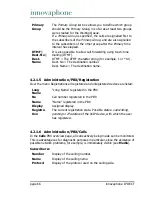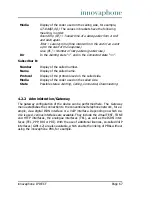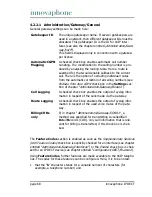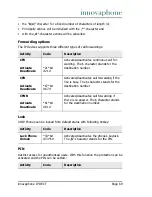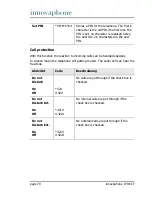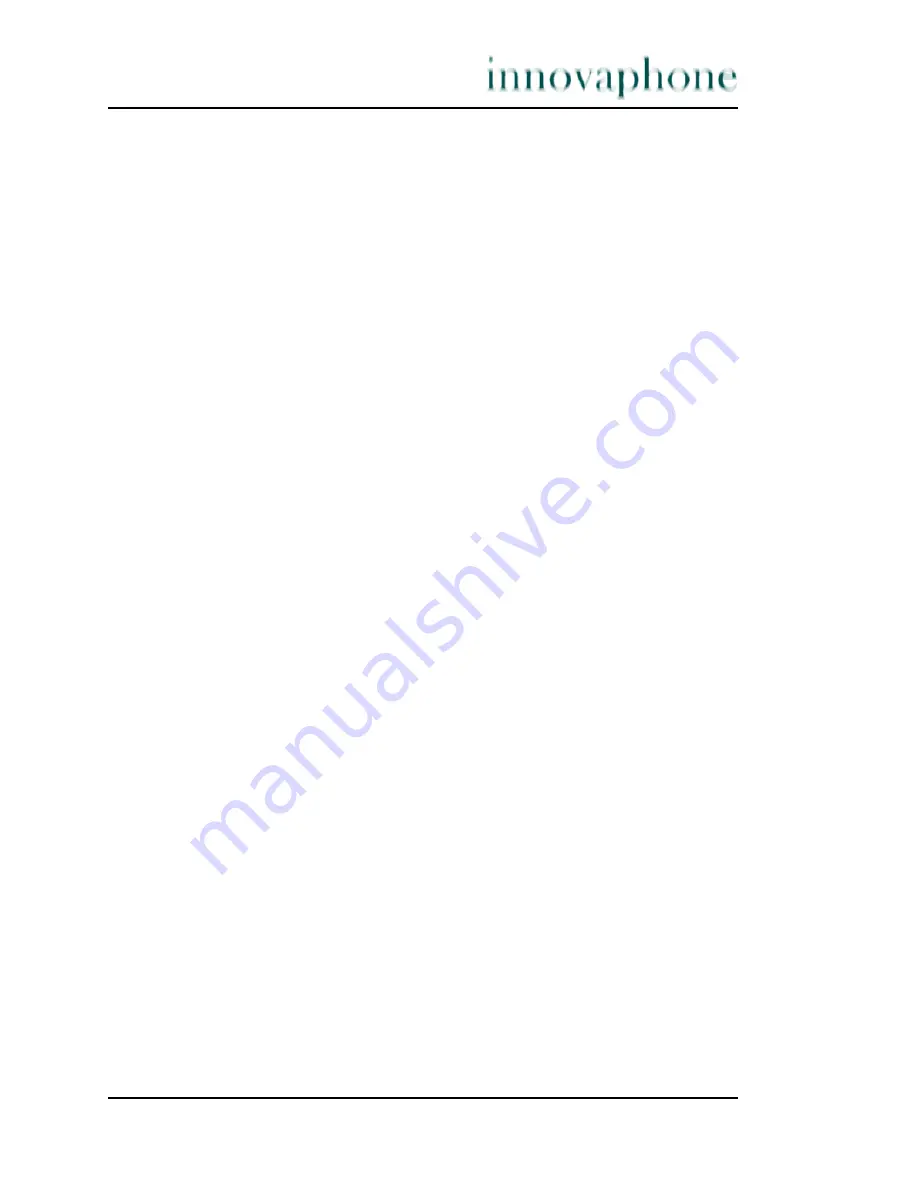
innovaphone IP DECT
Page 55
The object-specific entry fields are displayed accordingly as an extended section.
Below is an overview of all possible objects in the innovaphone PBX:
4.2.1.4.1
User Object:
With the
User
PBX object, you define the standard subscribers of the innovapho-
ne PBX.
The following details are entered in the
DECT
section and are therefore only re-
levant for DECT handset registrations:
4.2.1.4.2
Boolean Object:
The
Boolean
PBX object is used to define time-dependent true or false states in
the innovaphone PBX, and can be used for call forwarding or filters.
For example, the Boolean object
Working hours
(Mo-Fr 08:00-18:00 hrs)
can be
defined, which in the true state (that is, during office hours) is set to
true
and
outside office hours is set to
false
. This would enable a filter to be defined that
allows calls during office hours only.
In the same way, this Boolean object can be used for call forwarding. In the true
state (
true
), it would allow call forwarding to a particular subscriber during
office hours, in the false state (
false
) outside office hours.
The current state can be switched using manual override.
The following specifications are made in the
Boolean
section.
Busy on
n
Call(s)
Maximum number of calls made simultaneously. If, for
example, the numeric value
two
is entered, then
busy
is
signalled to the third and all further incoming calls. Just as
only two calls can be set up parallel.
Group
Indicati-
ons
If call groups have already been created, you can select them
here and add them to new objects.
Gateway
The system name (
Name
) of the IP DECT device.
Display
A variable text that is output on the IP DECT handset display.
IPEI
The serial number of the IP DECT handset. Is required for
unique registration of an IP DECT handset.
AC (Access
Code)
It is also possible to allocate an access code (a kind of PIN),
which protects the IP DECT handset against unauthorised
use.

